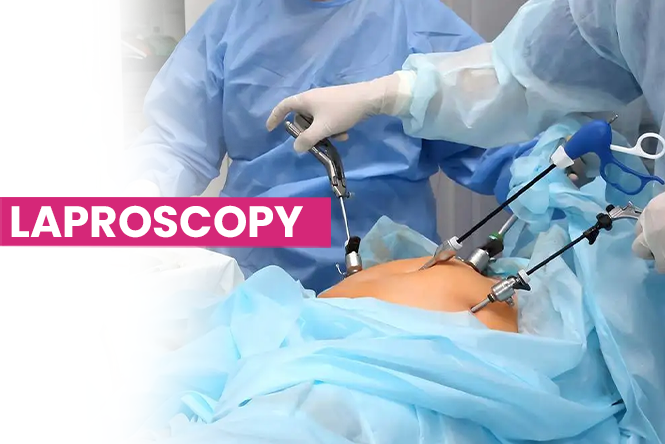
Laparoscopy has revolutionized many aspects of medical care, particularly in gynaecology, obstetrics, and assisted reproductive technology (ART). This minimally invasive surgical technique has not only transformed diagnostic processes but also significantly enhanced treatment outcomes in reproductive health. By providing a clearer and more accurate view of the female reproductive system, laparoscopy offers numerous benefits, including reduced recovery times, decreased risk of infection, and minimal scarring.
Altruistic surrogacy is a form of surrogacy where a woman, known as the surrogate or gestational carrier, carries and delivers a child for another individual or couple without receiving financial compensation beyond reimbursement for medical expenses and other reasonable costs associated with the pregnancy. Unlike commercial surrogacy, which involves monetary transactions, altruistic surrogacy is motivated by a desire to help others fulfil their dream of parenthood.
What is Laparoscopy?
Laparoscopy is a surgical technique in which a camera (laparoscope) is inserted into the abdomen through small incisions. This method allows Dr Goyal to diagnose and treat a range of reproductive and gynaecological conditions with minimal disruption to the patient's body.
Laparoscopy in Gynecology
In the field of gynaecology, laparoscopy is primarily used for the diagnosis and treatment of a variety of conditions. It allows doctors to examine the organs within the abdomen and pelvis, offering invaluable insights that might not be possible with non-invasive methods alone. Common gynaecological uses include:
- Diagnosis and Treatment of Endometriosis : Laparoscopy is the gold standard for diagnosing endometriosis, a painful disorder where tissue similar to the lining inside the uterus grows outside it. It can also be used to surgically remove the endometrial tissue, providing relief from pain and improving fertility.
- Removal of Ovarian Cysts and Tumors : Cysts and tumours can be removed with precision, causing minimal disruption to the surrounding tissues.
- Fibroid Removal : Laparoscopy allows for the removal of fibroids, benign tumours that grow in the uterus which can cause heavy menstrual bleeding, pain, and other health issues.
- Pelvic Adhesions : Scar tissue that binds organs together, often causing pain and infertility, can be removed via laparoscopy.
Laparoscopy in Obstetrics
Although less commonly used directly in obstetrics compared to gynaecology, laparoscopy can play a crucial role in certain obstetric conditions:
- Ectopic Pregnancy : For the management of ectopic pregnancies, where the embryo implants outside the uterus, laparoscopy is often the preferred removal method.
- Evaluation of Pelvic Pain : It can be used to investigate causes of pelvic pain during pregnancy, ensuring less disturbance to the uterus and fetus.
Laparoscopy in Assisted Reproductive Technology (ART)
Laparoscopy is integral to ART for both diagnostic and therapeutic purposes
- Evaluating Infertility : It helps in diagnosing conditions that could be causing infertility, such as blocked fallopian tubes or other abnormalities in the reproductive organs.
- Egg Retrieval : For certain ART procedures like ovarian drilling, laparoscopy can facilitate access to the ovaries for egg retrieval or to induce ovulation.
The Needs of Laparoscopy in Reproductive Healths
Laparoscopy meets several critical needs in reproductive health, including
- Accurate Diagnosis : Provides a high-resolution, magnified view of the internal anatomy, allowing for accurate diagnosis of conditions that might go undetected with other imaging techniques.
- Less Invasive Treatment : Offers a less invasive alternative to traditional surgery, resulting in less postoperative pain and faster recovery.
- Improved Fertility Outcomes : Particularly in the field of ART, laparoscopy can improve outcomes by addressing underlying issues such as tubal factors or pelvic adhesions.
- Better Patient Experience : With smaller incisions, less pain, and shorter hospital stays, patients generally report a better overall experience.
Laparoscopic Services Provided by Dr. Goyal
- Diagnostic Laparoscopy : Often the first step in a fertility assessment, diagnostic laparoscopy can detect conditions like endometriosis, fibroids, and pelvic adhesions that could be affecting fertility.
- Operative Laparoscopy : Dr Goyal performs procedures such as the removal of cysts, fibroids, and endometrial tissue, and the repair of reproductive organs. This technique is also used to treat ectopic pregnancies and perform hysterectomies.
- Laparoscopic Assisted Reproductive Techniques : In cases of infertility, laparoscopic techniques can assist in treatments like ovarian drilling and tubal reanastomosis, enhancing the effectiveness of subsequent IVF cycles.
A Leader in IVF and Reproductive Health
Dr Goyal's approach integrates her deep knowledge of gynaecology and obstetrics with her specialization in IVF. She offers personalized care plans that are tailored to the unique needs of each patient, employing a variety of advanced techniques to enhance fertility outcomes.
For those seeking expert care in gynaecology, obstetrics, and reproductive technologies, Dr Poonam Goyal offers a blend of experience, innovation, and compassionate care that is difficult to match. Her proficiency in laparoscopic procedures underscores her commitment to cutting-edge, minimally invasive treatments, making her one of the most sought-after specialists in her field. Whether addressing complex fertility issues or managing intricate gynaecological conditions, Dr Goyal's patients can trust that they are receiving top-tier medical support tailored to their individual needs.
